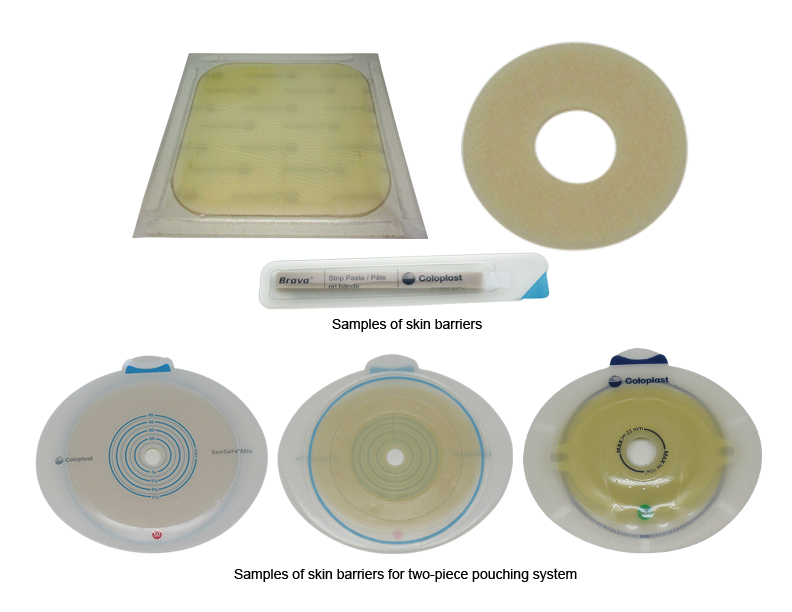
| Time Period: 1960s to Present |
| Manufacturer: Various |
|
The prime purpose of skin barriers is to provide peristomal protection from fecal or urine contact and the risk of chemical irritation. Initially, barriers such as oils, aluminum and zinc oxide pastes provided an impermeable layer against moisture. In the 1950s liquid adhesive glues were applied to the skin and the ostomy pouch for adherence. These were highly flammable; if the alcohol was not allowed to dry sufficiently chemical burns to the skin would result. In the early 1960s karaya gum, a natural vegetable-based product was found to provide excellent peristomal protection. Karaya-based products are still available. Today, advanced hydrocolloid-derived skin barrier products are available in various forms: cut-to-fit or pre-sized, flat and convex, powder, paste, paste strips, rigid, flexible and moldable rings. Liquid barrier films such as polymer-cyanoacrylate adhere to moist and injured weeping skin for peristomal protection and to promote healing. Skin barriers are integral to the pouching containment systems as a one-piece, where the pouch is attached to the skin barrier, or as a two-piece system where the pouch is separate from the skin barrier. Assessment by a nurse specialized in wound, ostomy and continence can determine the type of skin barrier to best meet the skin or stoma requirements such as: • type of stoma output – liquid from a urostomy, pasty from an ileostomy or formed from a colostomy • how far the stoma protrudes from the surface of the abdomen – flat or uneven • the condition of the skin around the stoma – normal or injured, creases or folds in areas around the stoma • skin sensitivities or allergies • type of skin barrier used such as average wear time or extended wear time • additional skin care or medicinal products used underneath the skin barrier • climate conditions • level of person activity |